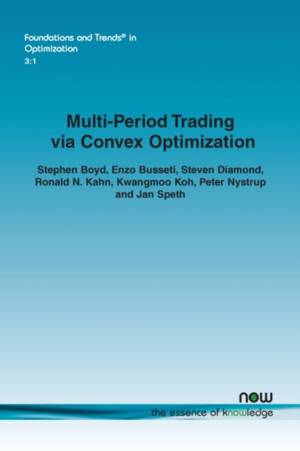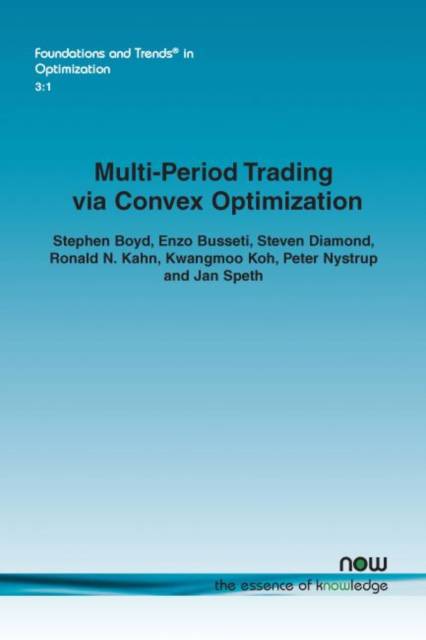
- Afhalen na 1 uur in een winkel met voorraad
- Gratis thuislevering in België vanaf € 30
- Ruim aanbod met 7 miljoen producten
- Afhalen na 1 uur in een winkel met voorraad
- Gratis thuislevering in België vanaf € 30
- Ruim aanbod met 7 miljoen producten
Zoeken
Multi-Period Trading via Convex Optimization
Stephen Boyd, Enzo Busseti, Steven Diamond, Ronald N. Kahn, Kwangmoo Koh
€ 69,95
+ 139 punten
Omschrijving
Multi-Period Trading via Convex Optimization collects in one place the basic definitions, a careful description of the model, and discussion of how convex optimization can be used in multi-period trading, all in a common notation and framework.
Specificaties
Betrokkenen
- Auteur(s):
- Uitgeverij:
Inhoud
- Aantal bladzijden:
- 88
- Reeks:
Eigenschappen
- Productcode (EAN):
- 9781680833287
- Verschijningsdatum:
- 8/08/2017
- Uitvoering:
- Paperback

Alleen bij Standaard Boekhandel
+ 139 punten op je klantenkaart van Standaard Boekhandel
Beoordelingen
We publiceren alleen reviews die voldoen aan de voorwaarden voor reviews. Bekijk onze voorwaarden voor reviews.











